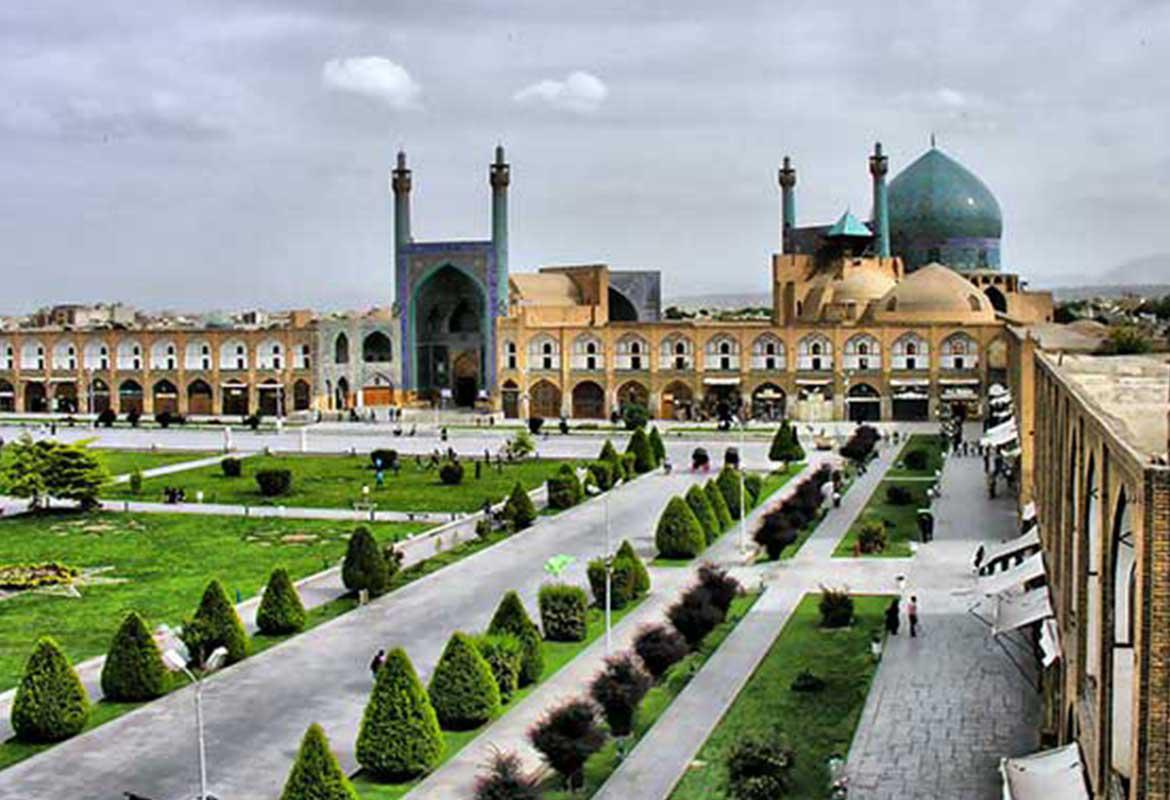Must-Sees
Naqsh-e Jahan Square
As one of the largest public squares in the world, Naqsh-e Jahan, meaning the World Image, is a UNESCO-registered World Heritage Site built upon the order of Shah Abbas I, the Great, in 16th and 17th centuries. Almost 508 meters long and 160 meters wide, the square is a large venue for friendly and family gatherings, adorned by wonderful buildings connected to each other by a row of the two-story arcades.
Recommend to a Friend:
Abbasi Mosque
Abbasi Mosque, now Imam Mosque, the most significant monument in Isfahan and one of the most wonderful mosques in the Islamic world, built in 17th century, is in the South of Naqsh-e Jahan Square. The exquisite design, haft-rangi (7-colored) tilework, and elaborate calligraphy immerse the visitors in pure spirituality.
Recommend to a Friend:
Sheikh Lotfollah Mosque
Constructed from 1602 to 1618, named after the famous Shiite cleric, Sheikh Lotfollah Mosque is located in the east wing of Naqsh-e Jahan Square, used to be the private praying place for the royal family. Unlike usual four-iwan mosques, it has no minarets and courtyard and to enter it, one has to climb some steps.
Recommend to a Friend:
Vank Cathedral
One of the most important Armenian cathedrals in Iran of the 17th century, located in Jolfa district of Isfahan, Vank Cathedral was constructed when Shah Abbas I, the Great, displaced a large number of the Armenian from Northwest of Iran (especially Jolfa, now in East Azerbaijan) to Isfahan. The cathedral enjoys the most amazing frescos depicting some scenes of religious history particularly the life of Jesus Christ as well as a museum with extremely valuable objects like the smallest bibles in the world!
Recommend to a Friend:
Ali Qapu Palace
Meaning “Sublime Portal”, situated in the west side of Naqsh-e Jahan Square, served as an entryway to royal palaces and gardens beyond, Ali Qapu was an elevated terrace fronting the square where Safavid kings and royalties used to sit to behold the events.
Recommend to a Friend:
Chehel Sotoun Palace Pavilion
Just a few-minute walk from Naqsh-e Jahan Square, the beautiful palace was completed during the reign of Shah Abbas II in 1666. With a terrace-like hall with 18 elaborately decorated huge wooden pillars and a mirror hall with two pillars and their image in the large pool in front of the palace, Chehel Sotoun is a home to a stunning collection of frescoes and miniatures.
Recommend to a Friend:
Jame Mosque
A UNESCO-registered World Heritage Site, a grand congregational one of the oldest of its type, built in four iwans, the Jame Mosque of Isfahan was firstly constructed around 771 and experienced different periods of construction afterwards each introducing new innovations into the world of Islamic art and architecture, four-iwan style and double-shelled dome being just two examples.
Recommend to a Friend:
Historical Bridges
Famous for different bridges on Zayande Rood (the river in Isfahan), Isfahan boasts the 11-arch Shahrestan Bridge, located in the east of city, dating back to the Sassanian era (224-651) as well as Si-o Se Pol (or Allah Verdi Khan Bridge) with 33 splendid arches and the 14-arch 133-meter Khaju Bridge, both built in the 17th century.
















